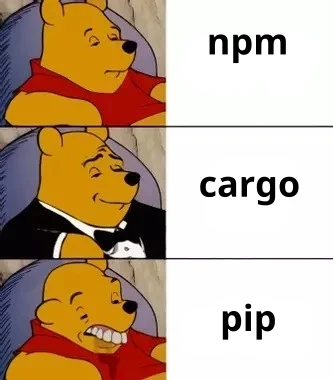Package managers be like
Sorry Python but it is what it is.

There have been multiple accounts created with the sole purpose of posting advertisement posts or replies containing unsolicited advertising.
Accounts which solely post advertisements, or persistently post them may be terminated.
Sorry Python but it is what it is.
